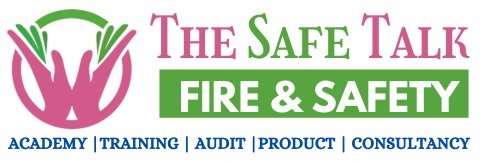Hazop Study Explained: A Complete Guide to Hazard and Operability Analysis
In industries where safety and efficiency are top priorities, identifying and preventing potential risks is essential. Whether in oil and gas, chemical processing, pharmaceuticals, or manufacturing, one small error can lead to catastrophic consequences. This is where Hazop Study—short for Hazard and Operability Study—comes into play.
A HAZOP study is one of the most widely used risk assessment techniques that helps organizations systematically identify hazards, evaluate operability issues, and reduce risks to the lowest level reasonably practicable. In this comprehensive guide, we will break down what HAZOP is, why it matters, its methodology, its benefits, and its limitations, and provide practical examples of its application.
What is a Hazop Study?
A Hazop Study is a structured and systematic technique for identifying potential hazards in a process or system. It was developed in the 1960s by Imperial Chemical Industries (ICI) to improve safety in chemical plants. Since then, it has become a globally recognized risk analysis method, recommended by standards such as IEC 61882.
The main objective of Hazop is to answer three key questions:
1. What could go wrong?
2. What are the potential consequences?
3. What safeguards can prevent or mitigate the issue?
By using guide words such as more, less, none, reverse, and " other than, a Hazop team examines process deviations and identifies whether they may cause safety hazards, environmental risks, or operational inefficiencies.
Why Hazop Study is Important
1. Risk Identification: Hazop helps uncover hidden process risks that might otherwise go unnoticed.
2. Prevention of Accidents: Predicting deviations prevents accidents before they happen.
3. Regulatory Compliance: Many industries are legally required to perform Hazop as part of safety management systems.
4. Improved Reliability: It enhances system operability by identifying potential bottlenecks and design flaws.
5. Cost Savings: Preventing accidents and unplanned downtime saves millions in operational costs.
When Should a Hazop Study Be Conducted?
A Hazop is most effective when carried out at specific stages of a project:
- Design Stage: Before construction, to identify flaws in the proposed system.
- Commissioning Stage: Before startup, to verify operability and safety.
- Operational Stage: Periodically during plant operation to ensure continuous improvement.
- Modification Stage: Whenever significant changes are introduced in process design or equipment.
The Hazop Study Methodology
Conducting a Hazop involves a step-by-step, structured approach:
1. Define the Scope
Determine the boundaries of the system under study—such as a chemical process, pipeline, or utility system.
2. Assemble the Team
A multidisciplinary team is formed, usually including:
- Hazop Leader (facilitator)
- Process engineers
- Instrumentation and control engineers
- Safety professionals
- Operations staff
- Maintenance experts
3. Gather Information
Collect P\&IDs (Piping and Instrumentation Diagrams), process flow diagrams, operating manuals, and design documents.
4. Divide the System into Nodes
Break the process into manageable “nodes”—sections where deviations can be studied (e.g., a pump, reactor, or pipeline segment).
5. Apply Guide Words
Use guide words to identify potential deviations. For example:
- No Flow → What if there is no flow in a pipe?
- More Pressure → What happens if pressure increases?
- Reverse Flow → What if the flow reverses direction?
6. Identify Consequences
Analyze the outcome of each deviation: fire, explosion, toxic release, equipment damage, or product quality issues.
7. Determine Safeguards
Check if existing controls (alarms, relief valves, shutdown systems) are sufficient.
8. Recommend Actions
If safeguards are inadequate, recommend corrective measures—such as design changes, additional alarms, or improved training.
9. Document Findings
Record all identified hazards, causes, consequences, safeguards, and recommendations in a Hazop worksheet.
Example of Hazop in Action
Let’s take a storage tank with flammable liquid as an example.
- Deviation: More Pressure
- Cause: Blocked vent line
- Consequence: Tank rupture, fire, explosion
- Safeguard: Pressure relief valve
- Recommendation: Install a backup relief valve and a high-pressure alarm
This structured approach ensures that no possible risk is overlooked.
Benefits of Hazop Study
1. Systematic and Comprehensive: Ensures every possible deviation is studied.
2. Team-Based Knowledge: Leverages expertise from multiple disciplines.
3. Applicable Across Industries: Works for chemical, oil & gas, power, pharmaceuticals, water treatment, and manufacturing.
4. Improves Safety Culture: Encourages proactive risk management.
5. Supports Continuous Improvement: Findings from Hazop lead to better designs and safer operations.
Limitations of Hazop Study
While Hazop is powerful, it does have some limitations:
- Time-Consuming: Large projects may take weeks or months.
- Resource-Intensive: Requires skilled personnel and detailed documentation.
- Dependent on Quality of Information: Inaccurate drawings or data can reduce effectiveness.
- Not a Quantitative Method: Hazop identifies hazards but does not calculate risk probability or severity in numerical terms.
Hazop vs. Other Risk Assessment Methods
- What-if Analysis: Less structured, brainstorming-based approach.
- FMEA (Failure Modes and Effects Analysis): Focuses on equipment failures rather than process deviations.
- LOPA (Layer of Protection Analysis): Used after Hazop to quantify risks and evaluate safeguards.
Hazop often serves as the foundation, and other methods may follow for deeper analysis.
Best Practices for Effective Hazop Studies
1. Choose an Experienced Leader: A skilled facilitator ensures structured discussions.
2. Use Updated Documentation: Always rely on the latest P&IDs and process data.
3. Encourage Participation: All team members must actively contribute.
4. Document Everything Clearly: Hazop worksheets should be detailed and traceable.
5. Follow-Up on Recommendations: The value of Hazop lies in implementing corrective actions.
Future of Hazop Studies
With digitalization and Industry 4.0, Hazop studies are evolving. Software tools and artificial intelligence are now helping engineers conduct more efficient and accurate hazard analyses. Virtual plant models, simulation tools, and digital twins are making Hazop studies more interactive, data-driven, and reliable.
Conclusion
The Hazop Study remains a cornerstone of industrial safety and risk management. By systematically analyzing potential deviations and consequences, industries can prevent accidents, ensure compliance, and build safer, more efficient systems.
Whether you are a process engineer, safety officer, or plant manager, understanding and applying Hazop methodology is crucial for reducing risks and safeguarding both people and assets.



